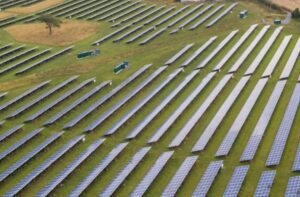South Australia has been a global pioneer in the shift from fossil fuels to clean energy, but a new report has found the state is set to lose its lead in the national renewables stakes to an unlikely contender – New South Wales.
The report, the latest National Energy Emissions Update from The Australia Institute, reveals the still heavily coal power reliant state of NSW is adding new large-scale wind and solar generation at a rapid rate.
This puts New South Wales – still one of the only remaining Australian states or territories without its own renewable energy target – neck and neck in a race with Victoria to overtake South Australia in terms of total renewable generation by volume, although South Australia will likely, for a very long time, remain the state with the highest renewable share.
The update says output from grid-scale wind and solar generators in NSW has doubled over the past 14 months – delivering another happy outcome, putting it well on course to replace the ageing and increasingly unreliable Liddell coal-fired power plant.
 “Renewables continue to surge on the eastern seaboard and New South Wales will soon overtake South Australia as the largest generator of wind and solar energy,” says Hugh Saddler, author of the report.
“Renewables continue to surge on the eastern seaboard and New South Wales will soon overtake South Australia as the largest generator of wind and solar energy,” says Hugh Saddler, author of the report.
“NSW maintains its steady growth in renewable generation and is competing with Victoria to take the mantle for highest wind and solar generation in the country.
“With NSW renewables growing at this pace, (they) could fill most of the generation gap left by Liddell’s closure in 2022.”
 But Saddler also warns that, with the current growth rate of new renewable generation comparable to that of Australia’s entire electricity system during the 1950s and 1960s, policy makers need to lift their game – particularly at the federal level.
But Saddler also warns that, with the current growth rate of new renewable generation comparable to that of Australia’s entire electricity system during the 1950s and 1960s, policy makers need to lift their game – particularly at the federal level.
“The sheer size scope of the renewable transition already taking place across the NEM is comparable to the development of Australia’s original electricity grids – new electricity generation from 1953 to 1960 is proportionate in size to new wind and solar generation from 2011 to 2019,” he said.
“The federal government is asleep at the wheel when it comes to planning and supporting the major transition from coal-fired power to renewables on the NEM, which is as large and as transformative as the original nation-building electricity grids in the 50s and 60s.”
As for the other states, the report notes that South Australia is at the cutting edge of incorporating variable renewable generation into existing electricity grids.”
Indeed, the output of large-scale solar and wind farms in South Australia exceeded that state’s demand for electricity from the grid (not including rooftop solar generation in either generation or supply) for 6.2 per cent of all trading intervals in the past financial year. And this number would have been higher if not for the curtailment of output from some wind generators.
Queensland, meanwhile, has also charted considerable growth, as one of the states the TAI points out has been much slower than any other in the shift to renewable generation.
While still not on track to meet its target of 50 per cent renewables by 2030, the report shows that Queensland overtook NSW in January as the state with the largest output of grid solar generation – a new milestone to add to its well established boast of more rooftop solar generation than any other state.
In fact, says Saddler, Queensland “retains its moniker as the sunshine state with the: largest solar generation output; largest share of solar rooftops; and most solar jobs.”








